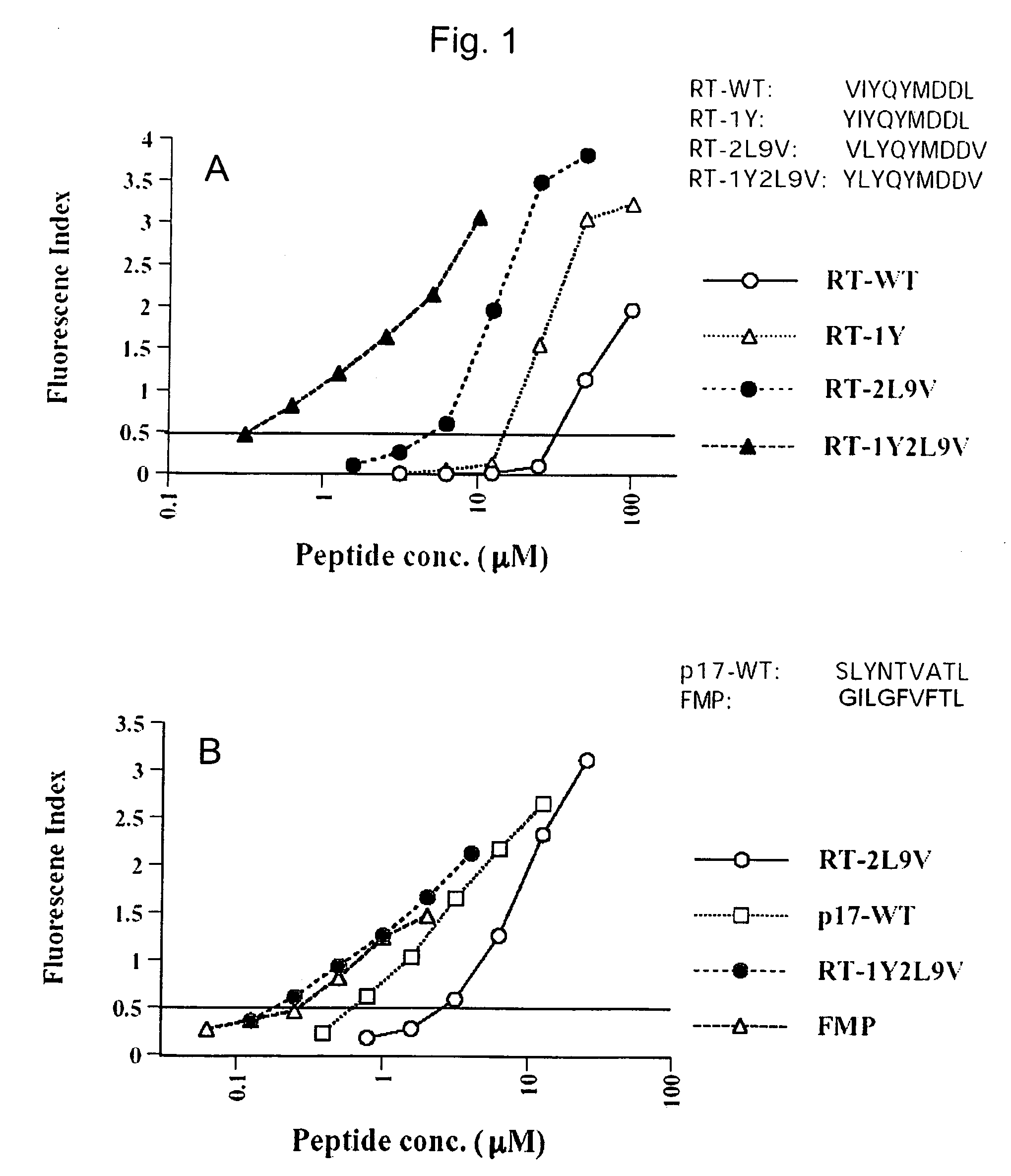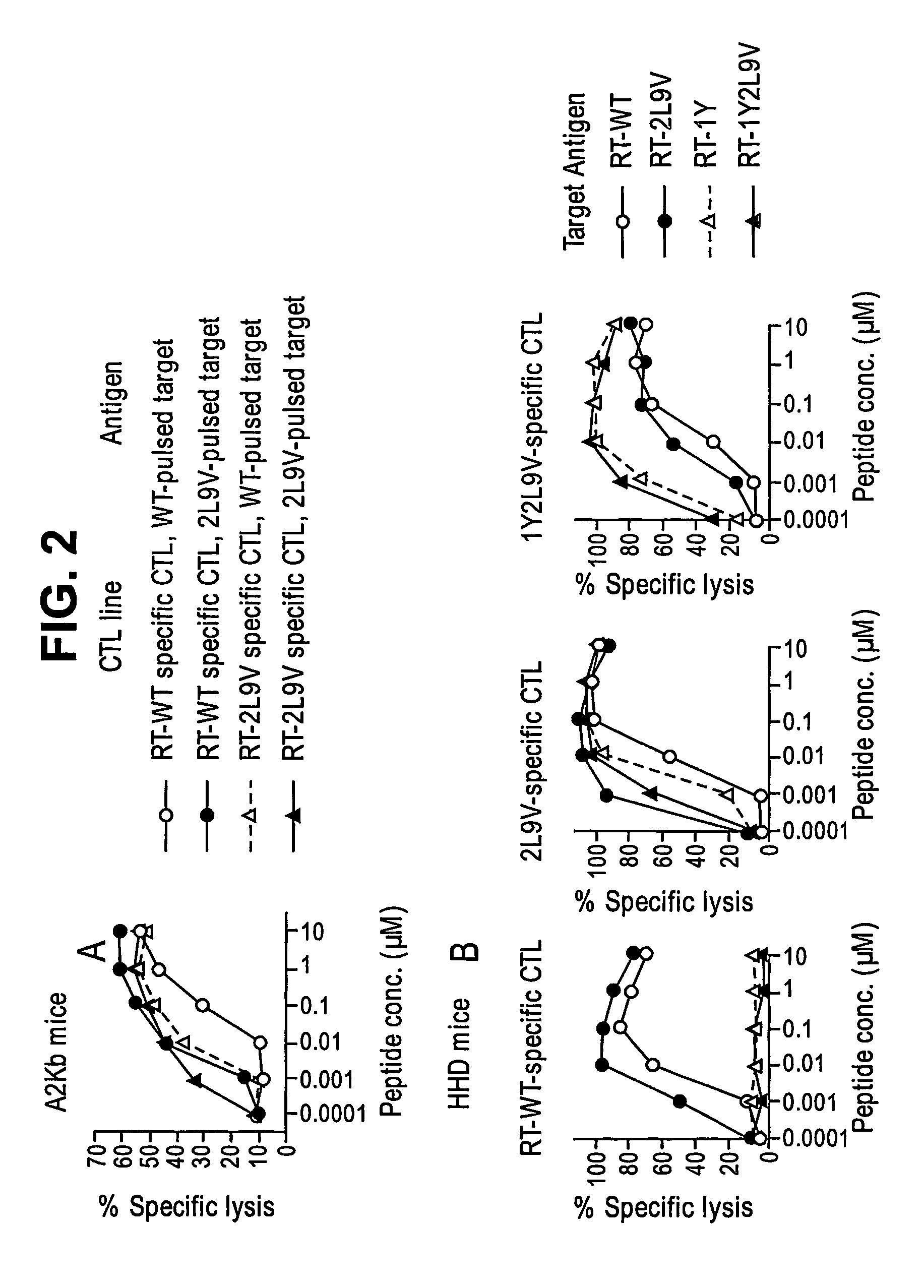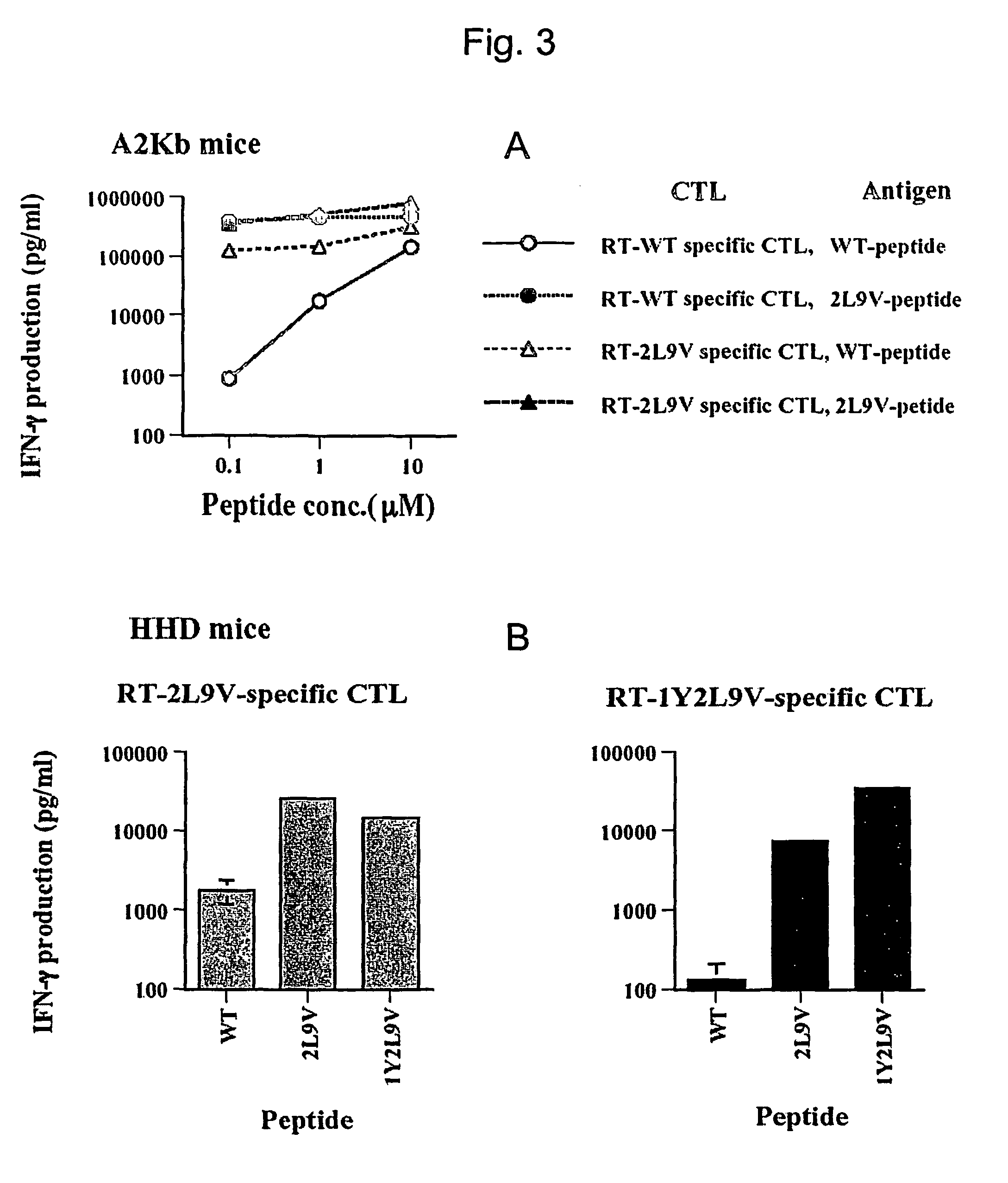Enhanced CTL epitope-containing HIV-1 reverse transcriptase polypeptides
a reverse transcriptase and polypeptide technology, applied in the field of immunology and genetics, can solve the problems of insufficient elimination of infection in most cases, ineffective antibody-inducing vaccines, and insufficient natural immune response to hiv, etc., and achieve the effect of enhancing their therapeutic valu
- Summary
- Abstract
- Description
- Claims
- Application Information
AI Technical Summary
Benefits of technology
Problems solved by technology
Method used
Image
Examples
example 1
RT Ala-Substituted Peptides Binding to HLA-A2.1 Molecules
[0115]This example is designed to determine which residues, other than the anchor residues 2 and 9, are important in RT-WT peptide binding to MHC molecules.
[0116]Binding affinity of wild type RT (179-187) (RT-WT) using the T2 binding assay, measuring the cell surface stabilization of HLA-A2.1 molecules after incubation with peptide. Relative affinity for MHC molecules was determined for each peptide in Table 2 by comparing their FI0.5 values as calculated from titration curves against HLA-A2 molecules. Using this method, an FI0.5 of 41.9 μsM was calculated for RT-WT. This binding affinity was much weaker than that of other 9-mer peptides tested in our lab such as hepatitis C virus peptide C7A2 (Sarobe, P., et al., (1998) J. Clin. Invest. 102.1239), Flu matrix peptide 58-66 (FMP) (Gotch, F. M., et al., (1987). Nature 326. 881.), and HIV-gag peptide SLYNTVATL (SEQ ID NO:9) (McMichael, A. J., and B. D. Walker. (1994), AIDS 8 (sup...
example 2
Leu and / or Val-Substitution at Anchor Regions in RT-WT
[0119]In an attempt to enhance peptide binding to MHC molecules, peptides with substitutions of leucine and / or valine, at the anchor positions 2 and 9 respectively, were synthesized and tested in the binding assay, as described above. The leucine and valine substitutions were chosen because these are the amino acids that predominate at the respective positions in peptides known to bind HLA-A2.1 molecules (Rammensee, H.-G., et al., (1995) Immunogenetics 41:178). Peptides substituted with leucine at position 2 or valine at position 9 had around 2-fold higher affinity for HLA-A2 than RT-WT. However, a peptide substituted at both positions, RT-2L9V, had around an 8-fold higher binding affinity for HLA-A2 than RT-WT. This affinity was higher than that of any other alanine-substituted peptides of RT (179-187) tested. (see table 2).
example 3
Comparison of the Binding Affinity Between Substitutions in Anchor Region and Tyrosine-Substitution in Position 1
[0120]Recent studies reported that a Tyrosine substitution in the first position (P1Y) can increase peptide / MHC binding without altering antigenic specificity (Pogue, R. R., et al., (1995) Proc. Natl. Acad. Sci. U.S.A. 92:8 166; Tourdot, S., A. et al., (2000) Eur J Immunol 30:3411). Based on these studies, we used the T2 binding assay to compare peptide / MHC binding among 4 derivative peptides:
[0121]
RT-WT,RT-2L9V,RT-1Y (YIYQYMDDL); SEQ ID NO: 8),andRT-1Y2L9V (YLYQYMDDV); SEQ ID NO: 3)
[0122]As shown in FIG. 1A, RT-2L9V displayed much better binding than the RT-1Y, while both substituted peptides had higher affinity than RT-WT. RT-1Y2L9V displayed the highest affinity of all the peptides. The binding ability of RT-1Y2L9V was almost as good as that of FMP (FIG. 1B). This data suggests that RT-2L9V and RT-1Y2L9V were the best candidates for an epitope enhanced peptide.
PUM
| Property | Measurement | Unit |
|---|---|---|
| concentrations | aaaaa | aaaaa |
| concentrations | aaaaa | aaaaa |
| hydrophobic | aaaaa | aaaaa |
Abstract
Description
Claims
Application Information
 Login to View More
Login to View More - R&D
- Intellectual Property
- Life Sciences
- Materials
- Tech Scout
- Unparalleled Data Quality
- Higher Quality Content
- 60% Fewer Hallucinations
Browse by: Latest US Patents, China's latest patents, Technical Efficacy Thesaurus, Application Domain, Technology Topic, Popular Technical Reports.
© 2025 PatSnap. All rights reserved.Legal|Privacy policy|Modern Slavery Act Transparency Statement|Sitemap|About US| Contact US: help@patsnap.com



